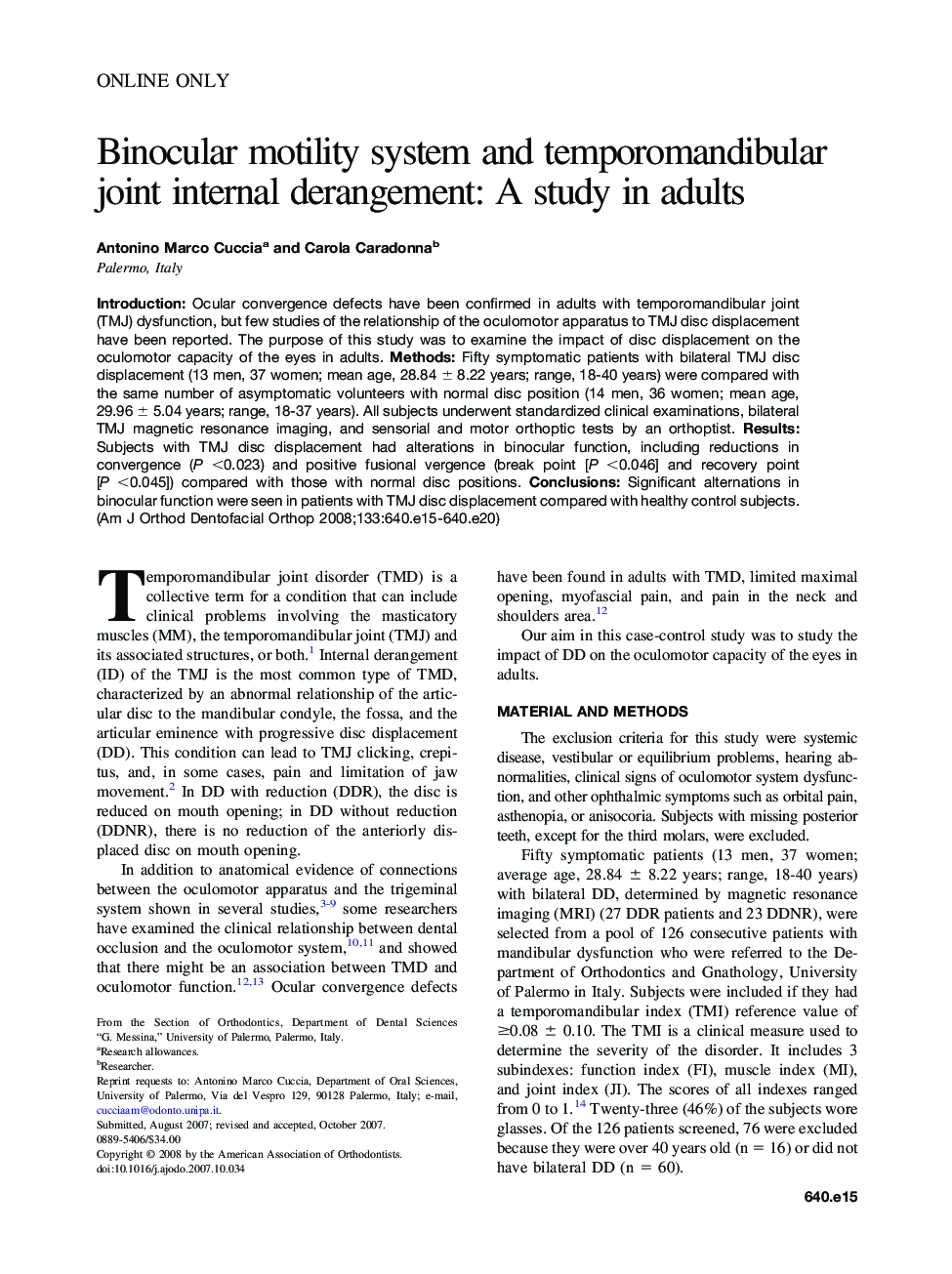| Article ID | Journal | Published Year | Pages | File Type |
|---|---|---|---|---|
| 3120230 | American Journal of Orthodontics and Dentofacial Orthopedics | 2008 | 6 Pages |
Abstract
Introduction: Ocular convergence defects have been confirmed in adults with temporomandibular joint (TMJ) dysfunction, but few studies of the relationship of the oculomotor apparatus to TMJ disc displacement have been reported. The purpose of this study was to examine the impact of disc displacement on the oculomotor capacity of the eyes in adults. Methods: Fifty symptomatic patients with bilateral TMJ disc displacement (13 men, 37 women; mean age, 28.84 ± 8.22 years; range, 18-40 years) were compared with the same number of asymptomatic volunteers with normal disc position (14 men, 36 women; mean age, 29.96 ± 5.04 years; range, 18-37 years). All subjects underwent standardized clinical examinations, bilateral TMJ magnetic resonance imaging, and sensorial and motor orthoptic tests by an orthoptist. Results: Subjects with TMJ disc displacement had alterations in binocular function, including reductions in convergence (P <0.023) and positive fusional vergence (break point [P <0.046] and recovery point [P <0.045]) compared with those with normal disc positions. Conclusions: Significant alternations in binocular function were seen in patients with TMJ disc displacement compared with healthy control subjects.
Related Topics
Health Sciences
Medicine and Dentistry
Dentistry, Oral Surgery and Medicine
Authors
Antonino Marco Cuccia, Carola Caradonna,
